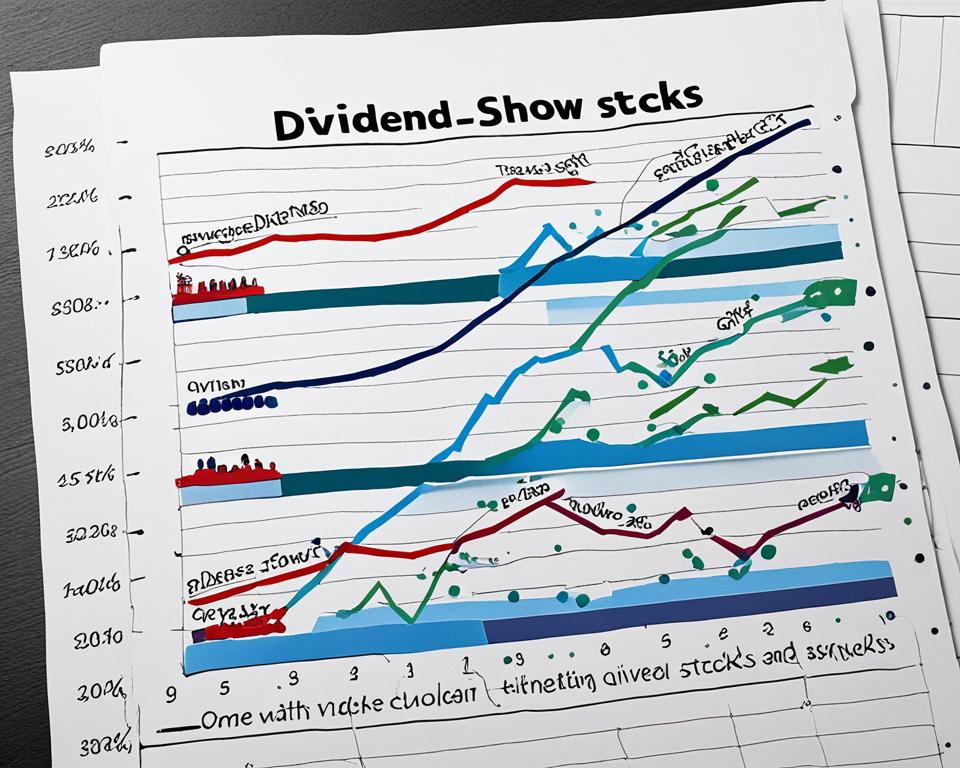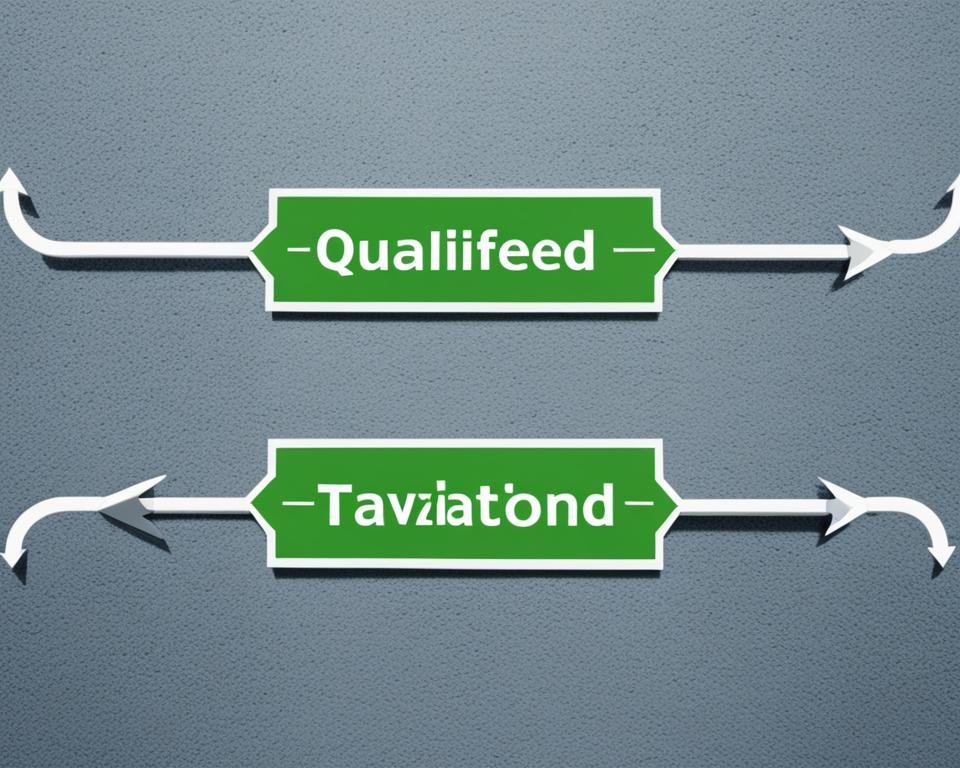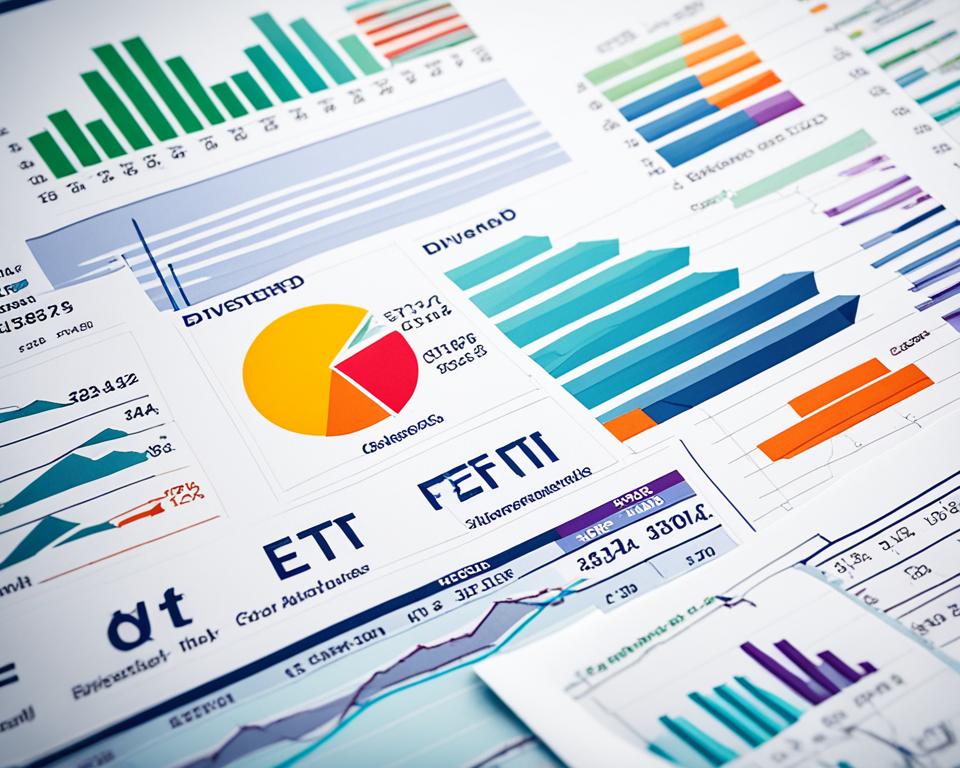Imagine owning a piece of a prosperous company that regularly shares a part of its profits with you—that’s the power of investing in dividend stocks. As a stockholder, you receive these distributions known as dividends, which are a testament to the company’s performance and your wise investment choice. Dividends typically come in two flavors: cash payments, which can boost your bank account, or additional shares, which expand your stake in the company.
Additionally, these payments offer a form of regular investment return, enhancing your portfolio’s value over time. However, not every stock will grant you this benefit. To tap into this steady stream of stockholder profits, careful selection of dividend stocks is essential. These investments can lead to less turbulent experiences in the stock market and provide you with the dual joys of potential equity growth and regular income.
Key Takeaways
- Dividends are a share of a company’s profits paid out to stockholders, offering a regular source of income.
- Investors can earn dividends in cash or via additional shares, known as stock dividends.
- Not all stocks offer dividends, so choosing dividend stocks deliberately is key.
- Dividend yield and payout ratios are important metrics to help compare and evaluate dividend stocks.
- Investing in dividend stocks can provide stability and help smooth out total returns over time.
- Companies with long-standing patterns of increasing dividends may provide less volatile investment options.
The Basics of Dividends
At the core of investment returns, dividends serve as a beacon of profit sharing, signifying a company’s confidence in its financial prosperity and commitment to rewarding its investors. If you have ever pondered the dividend meaning, it fundamentally represents a company’s way of distributing a portion of its earnings to shareholders, offering more than just potential capital appreciation.
Definition of Dividends
Dividends are payments made by a company to its shareholders from its profits or reserves, translating corporate earnings into personal gain. These distributions highlight the ability of firms to not only generate profit but also to share it directly with you, the investor. Dividends can be regularly scheduled or occur as a surprise in the form of special dividends.
Different Types of Dividends
There are several forms dividends can take, reflecting the adaptability and investor-centric approach of corporations. The most common, cash dividends, are paid directly into your brokerage account, perhaps the simplest method to supplement your income stream. On the flip side, stock dividends award additional shares, proportionate to your current holdings, potentially increasing your ownership stake without an immediate tax bill.
Investment strategies sometimes focus on dividend reinvestment schemes, commonly known as DRIPs (Dividend Reinvestment Plans). These plans embody the compounding effect by automatically reinvesting your cash dividends in more shares of the company. It’s a hands-off approach that can enhance your stake in the enterprise gradually over time.
Not to be overlooked, preferred dividends tend to be distributed to owners of preferred stocks and usually offer fixed, reliable payments as stipulated by the terms of the stock. These dividends typically occur quarterly and prioritize payment over common stock dividends.
How Dividends Provide Investor Returns
Dividends can play a significant role in your investment portfolio, offering a reliable source of passive income outside of any potential stock price appreciation. Moreover, companies known for consistent and increasing dividends tend to be perceived as more stable and less risky, which can lead to a more predictable and potentially profitable investment journey for you.
When designing your financial strategy, understanding and utilizing the dividends paid by your investments allow for a disciplined approach to wealth growth. So whether you’re drawn to the immediate satisfaction of cash dividends or the long-term strategy behind stock dividends and DRIPs, the power of these profit distributions is unmistakable in the investment world.
Understanding Dividend Stocks
When you delve into the realm of dividend stocks, you’re essentially exploring avenues for potential passive income through dividend payouts. These stocks represent shares in businesses with durable financial profiles and a history of distributing a portion of earnings to their shareholders. What truly sets these stocks apart is their propensity for marking both immediate returns and a commitment to long-term financial stability.
Let’s break down the concept. A dividend payout is akin to your share of the company’s profits, deposited directly into your investment portfolio. Unlike companies fixated on reinvestment and growth that typically refrain from dividends, those offering dividend stocks often have ample cash flows and a mature business model, allowing them to reward investors regularly.
In other words, dividend stocks can be a beacon for steady financial gain, illuminating your investment path with reliable income streams.
But not all dividend-bearing stocks are created equal. Enter Dividend aristocrats—these are the paragons of the dividend world. S&P 500 companies that wear this badge of honor have a minimum track record of increasing dividends for at least a quarter of a century. They’re not just any stocks; they are stalwarts of consistency and reliability in the financial markets.
If you’re looking to bolster your investment strategy, focusing on dividend stocks, and particularly on Dividend aristocrats, could be a solid move towards fortifying your earnings. Keep reading to unlock more wisdom on making dividends work for you.
Consider the following comparison of a typical dividend stock against a Dividend aristocrat:
| Dividend Stock Features | Typical Dividend Stock | Dividend Aristocrat |
|---|---|---|
| Dividend History | May offer dividends irregularly | Invariably increases dividend payout annually |
| Financial Performance | Variable, often linked to current profits | Strong and consistent, reflecting long-standing financial health |
| Investor Expectation | Subject to change with business performance | High, due to historical performance and stability |
| Market Volatility | May be higher | Typically lower, attributed to perceived stability |
| Investment Approach | Suitable for diverse strategies, including short-term gains | Ideal for long-term investment and compounding returns |
The distinction is clear: while any stock offering dividends can be attractive, Dividend aristocrats provide a far more reliable gauge of financial stability and resilience, essential characteristics for the vigilant investor. Remember, a company’s dividend history vividly paints a picture of its financial narrative—one that you want to read thoroughly before investing.
What are dividends?
Imagine being a part-owner of a company that not only grows in value but also pays you directly for your stock ownership. That’s the magic of dividends—a slice of a company’s profits handed out to shareholders. These payouts echo the strength of your investment and can lead to a steady income stream. But what types of dividends exist? And how do they function in the realm of investing? Let’s delve into the mechanisms that fuel these profit-sharing tools.
Cash Dividends Explained
Cash dividends are the monetary rewards that a company gives out to its stockholders. They are one of the clearest signs of a firm’s financial health and its capacity to generate annual cash dividends. Typically distributed on a quarterly, monthly, or semiannual basis, cash dividends represent a real-time compensation for your investment efforts.
The journey of a cash dividend starts with the profits earned by a company. These profits, once realized, are then discussed by the board of directors. A dividend declaration is made whenever the board decides to share a chunk of these profits with shareholders. This declaration not only reflects the exact dividend per share but also signifies the dividend payment date—the day when the dividends will find their way into your pocket.
Stock Dividends and Their Mechanism
Unlike cash dividends, stock dividends do not immediately impact your bank balance. Instead, they increase your stake in the company. Here, the process is quite straightforward: when a company opts to distribute stock dividends, it issues additional shares to its shareholders. This is usually based on a percentage of the shares that a shareholder already possesses.
For instance, should there be a declaration of a 5% stock dividend, you as an owner of 100 shares would be granted an extra 5 shares. This increase in shares enhances your stock ownership without the need to invest additional capital. Moreover, these dividends offer a tax advantage in that they are not taxed until you decide to sell the newly acquired shares. This mechanism preserves the company’s cash reserve while allowing your investment to grow in quantity and potentially, over time, in value.
Anatomy of a Dividend: Declaration, Payment, and Dates
Delving into the world of dividends unveils a structured process that starts at the boardroom and ends in your portfolio. It’s a journey from corporate earnings to shareholder pockets, with a set itinerary including declaration, record dates, and distributions. While embarking on this voyage, understanding each milestone—the dividend declaration, ex-dividend date, record date, and payment date—is crucial in maximizing your investment benefits.
The Dividend Declaration Process
The voyage begins with the company’s board of directors casting their vote, resulting in the dividend declaration. Here, they set forth the terms of the dividend distribution, including the amount of the dividend and the payment schedule. This proclamation is the bedrock of the dividend history of a company, setting expectations for you, the investor. It signifies more than a simple payout; it’s a marker of the company’s financial sureness and capacity to share success with its shareholders.
Important Dividend Dates You Should Know
Mark your calendars, investors! Identifying and acting in alignment with these vital dates is imperative to stake your claim in a dividend payout:
- The ex-dividend date carves out the boundary line. If you’re aiming for the payout, you need to own the stock before this date—the crossing point that determines shareholder eligibility for the current dividend.
- Following closely, the record date is the ledger’s entry, a record of all shareholders entitled to the upcoming distribution. Usually falling two business days after the ex-dividend date, this is when companies take stock, quite literally, of who will receive the dividends.
- And then, the journey culminates with the payment date—the part where your investment truly pays off. On this date, dividend payments are dispersed, making it the highlight of the dividend history of any profit-sharing voyage.
Here’s a table to help you visualize the dividend timeline:
| Date Type | Description | Action Required for Investors |
|---|---|---|
| Ex-dividend Date | The cutoff date to be eligible for the dividend payout | Own the stock before this date |
| Record Date | The company’s official list date for eligible dividend recipients | No direct action needed; be a holder from the ex-dividend date |
| Payment Date | The actual distribution day of declared dividends | Reap the rewards of your investment |
Remember, keeping an eye on these dates and understanding their impact on dividend distribution is a vital component of dividend investing. Align your trades with these timestamps to ensure your place at the payout table.

Calculating Your Dividend Payout
As an investor in dividend-paying stocks, one of your primary interests lies in understanding how these payments contribute to your income stream. To get a true sense of what dividends are doing for your portfolio, you’ll need to be familiar with the Dividend yield formula and the concept of Dividend per share (DPS). These calculations are the cornerstones of dividend investing, revealing the efficiency of your investment in generating income.
The dividend yield is a key performance indicator; it informs you about the return your investment is generating in relation to the stock’s price on a particular date. Expressed as a percentage, it enables a standardized comparison of dividend stocks. The formula for this is:
Annual Dividends Per Share / Price Per Share = Dividend Yield
In tandem, DPS offers insight into the actual amount being disbursed to shareholders. It represents the portion of a company’s total dividends that are attributed to each individual share of stock. This figure not only portrays a snapshot of current payouts but also assists you in tracing the dividend growth rate over time. To calculate DPS:
Total Dividends Paid / Total Number of Outstanding Shares = DPS
Together, these formulas arm you with the knowledge to assess not just the current value of your dividends, but also the potential for their growth—a central tenant for those who rely on dividends as a stable income stream. A company with a consistently rising DPS is typically perceived as financially robust and investor-friendly.
To fully appreciate how these formulas work, let’s see them in action through a table:
| Company | Annual Dividend | Stock Price | DPS | Dividend Yield |
|---|---|---|---|---|
| Company A | $4.00 | $100 | $1.00 | 4% |
| Company B | $2.50 | $50 | $0.50 | 5% |
| Company C | $3.00 | $75 | $0.75 | 4% |
Considering these figures, investors can discern monthly, quarterly, or annual income projections and visualize the growth trajectory of their investments through the dividend growth rate. The goal is to identify stocks with the potential for sustainable and increasing returns, enhancing the robustness of your income stream long into the future.
It’s pivotal to remember, a high dividend yield may not always signal the best investment—sometimes it might indicate a temporarily depressed stock price. Similarly, a consistently increasing DPS could suggest that the company is investing less in future growth. Thus, these metrics should always be evaluated within the larger context of the company’s overall performance and market conditions to inform smarter investment decisions.
The Allure of Dividend Aristocrats
Dividend Aristocrats are the epitome of investment allure, representing the pinnacle of dividend growth rate consistency and the promise of a stable income. These illustrious members of the S&P 500 index have carved out a respected niche, appealing to investors who prioritize less volatile assets and long-term reliability. Let’s explore what makes a company a distinguished Dividend Aristocrat and the compelling advantages they offer to shareholders.
Criteria for Dividend Aristocrats
Becoming a Dividend Aristocrat isn’t simply about longevity; it’s about meeting stringent benchmarks that set these companies apart. To be classified in this revered group, a company must consistently raise its dividends for at least 25 consecutive years. But that’s not all—these S&P 500 conglomerates also meet specific market capitalization and liquidity requirements, ensuring that they are not just dependable but also significant players in the marketplace.
These criteria act as a yardstick for fiscal fortitude, ensuring that only those companies with unwavering profitability and solid management practices earn the prestigious title. When you invest in a Dividend Aristocrat, you’re placing your trust in a company that has not only weathered market cycles but flourished through them.
Benefits of Investing in Dividend Aristocrats
The benefits of hitching your investment wagon to a Dividend Aristocrat are compelling. Foremost is the dividend growth rate—a metric portraying a company’s ability to not only maintain but also increase the payout to shareholders. This steady rise is a hallmark of resilience, providing a cushion against inflation and an expanding income over time.
Other alluring perks include the inherent stability associated with these entities. The fact that they have a history of enduring through economic downturns speaks volumes, making them less volatile in the eyes of seasoned investors. Their consistent performance is a beacon for those seeking reliable returns amidst the stock market’s ebb and flow.
Lastly, Dividend Aristocrats typically represent established industries and sectors, giving you the breadth of exposure across the S&P 500. By integrating these giants into your portfolio, you plant the seeds for a garden of investments that promises to grow year after year, offering you a verdant landscape of opportunity—a remarkable blend of wealth preservation and income generation.
Indubitably, Dividend Aristocrats are synonymous with financial fidelity and endurance. By choosing to incorporate these storied stocks into your investment strategy, you build not just a portfolio, but a legacy of wealth that stands the test of time and market turbulence. The allure is undeniable, and the rewards, tantalizingly tangible.
Dividend Yield Formula: Evaluating Investment Opportunities
When you’re comparing investment opportunities, especially among stocks that offer dividends, there’s a handy metric known as the dividend yield. This calculation is integral for stock valuation and plays a crucial role in your investment comparison. But do you know how to evaluate it correctly?
The dividend yield is a financial ratio that measures how much a company pays out in dividends each year relative to its stock price. It’s given as a percentage and is critical for assessing the attractiveness of a stock as an income-generating investment. Here’s the standard formula:
Annual Dividend Per Share / Stock Price = Dividend Yield
By using this formula, you can compare the annual dividend income you would receive from different stocks regardless of their share price. This provides a level playing field for evaluating stocks that may be priced very differently.
Imagine a company that offers a $2 annual dividend per share with its stock trading at $40. Using the formula, the dividend yield would be 5%. Now, if the stock price falls to $30 without a change in the dividend, the yield rises to about 6.7%. This increase might seem appealing at first glance, but it’s essential to ask why the stock price fell. A lower price can indicate issues within the company or a market downturn, affecting your investment in the long term.
It’s a balancing act, really. A high dividend yield can be alluring, signaling lucrative income, particularly when compared to low-interest-rate savings. However, an exceptionally high yield could also be a red flag, signifying potential stock pricing issues or a company in distress.
To help you better understand the implications of the dividend yield, consider this scenario:
| Scenario | Stock Price | Annual Dividend | Dividend Yield |
|---|---|---|---|
| Company XYZ before stock price decline | $100 | $5.00 | 5% |
| Company XYZ after stock price decline | $80 | $5.00 | 6.25% |
| Another company with steady stock price | $100 | $4.00 | 4% |
As shown, Company XYZ’s higher dividend yield after a stock price drop might seem more attractive than another company with a consistent price and lower yield. However, it’s crucial to delve into why XYZ’s stock price dropped before jumping in. This is where your investment savvy comes in—analyzing the dividend yield in the context of overall company performance and broader market trends is essential.
Remember, the dividend yield is but one tool in the investor’s kit. Used wisely, in tandem with other evaluations like company fundamentals, it can pave the way to a more informed decision, shaping a more profitable investment journey for you.
Comparing Dividend Stocks vs. Growth Stocks
When examining the avenues for building your investment portfolio, you may find yourself at a crossroads between dividend stocks and growth stocks. Both investment strategies have their distinct paths and destinations, tailored to different financial goals and appetites for risk.
Distinguishing Features of Dividend and Growth Stocks
Dividend stocks, renowned for their dividend history and, often, a steady dividend declaration pattern, cater to those who appreciate consistent income generation—a sign of financial well-being in the corporate world. Growth stocks, by contrast, may not offer immediate payouts but allure those looking for long-term growth. These stocks typically belong to companies that are in their expansion phase—companies that reinvest their earnings back into their business to accelerate growth and multiply future profits.
While dividend stocks tend to be associated with well-established companies boasting stable revenues, growth stocks represent firms that are in the earlier stages of their business lifecycle or are operating in rapidly-evolving sectors. The key difference lies in the use of the firms’ earnings; dividend entities prioritize rewarding shareholders directly, whereas growth-oriented firms reinvest profits into scaling operations, entering new markets, and innovating products or services.

Strategic Considerations for Income and Growth
The strategic choice between dividend and growth stocks should align with your financial aspirations and timeline. If a dependable source of regular income that can either be reinvested or used to fund your lifestyle appeals to you, then dividend stocks might be your calling. Meanwhile, if you’re aiming for aggressive capital appreciation over a more extended period, and you have the capacity to weather potential market fluctuations, growth stocks may be more aligned with your strategy.
Investors drawn to dividend stocks are often planning for the future with a focus on long-term growth and a desire for financial stability. They may be retirees or individuals who are near retirement age. On the flipside, those keen on growth stocks might be ready to reinvest any earned capital gains to harness the power of compounding returns over time, often with a higher tolerance for risk and a longer investment horizon.
Your analysis should not only consider potential income and growth but also evaluate a company’s long-term prospects and the overall economic environment. Sound investment decisions are based on a thorough understanding of your financial situation, investment goals, and risk tolerance.
In summary, as you brave the investment landscape, consider whether the immediate income from dividend stocks or the potential high-growth trajectory of a growth stock is more conducive to your financial blueprint. Whichever route you choose, ensure it travels towards the destination of your ultimate financial objectives.
<!–
| Investment Strategy | Dividend Stocks | Growth Stocks |
|---|---|---|
| Primary Focus | Income generation | Capital appreciation |
| Company Stage | Mature businesses with stable cash flow | Emerging companies with higher reinvestment |
| Risk Level | Lower, with predictable returns | Higher, with greater volatility |
| Investor Profile | Income-seeking, risk-averse | Growth-focused, risk-tolerant |
–>
Stock Dividend Vs Cash Dividend: Which is Better?
As you venture into the world of investments, you’ll likely encounter two primary types of dividends—stock and cash dividends. Each has its merits and considerations, such as company shares, share dilution, tax advantage, and cash reserves. Understanding which type aligns best with your investment goals, whether it’s seeking immediate income or bolstering long-term wealth, is vital.
What is a Stock Dividend?
A stock dividend is a payment made in additional company shares instead of cash. When a corporation opts to issue stock dividends, it rewards you with extra shares, leading to share dilution. Though this can affect the share price by increasing the number of outstanding shares, it preserves the company’s cash reserves. This maneuver is especially strategic during periods when the company prefers to conserve cash yet still reward investors.
Advantages and Disadvantages of Stock vs. Cash Dividends
Stock dividends come with a significant tax advantage—they are generally not taxable until sold. This allowance can be particularly appealing if you’re in it for the long haul, focusing on compounding your investment sans the immediate tax bite. In contrast, cash dividends put money directly into your pocket, acting as a real-time reward for your investments, but they are subject to taxes in the year received.
In your journey as an investor, deciding between stock and cash dividends may pivot on your financial strategies and tax considerations. To help illustrate the distinction, let’s examine some scenarios:
| Dividend Type | Immediate Income | Influence on Share Price | Tax Considerations | Impact on Company’s Cash Reserves |
|---|---|---|---|---|
| Cash Dividend | Provides current income | No direct effect | Taxable when received | Reduces reserves |
| Stock Dividend | Increases share ownership, no immediate cash | May lead to share dilution | Deferred taxation until shares are sold | Preserves reserves |
Opting for cash dividends might be suitable if current income is a priority for you, while preferring stock dividends can align with a goal to expand your company shares over time. Regardless of the path you choose, ensure it resonates with your long-term financial vision.
Dividend Reinvestment Plans (DRIPs) Demystified
Unlock the potential of dividend reinvestment with Dividend Reinvestment Plans, commonly referred to as DRIPs. DRIPs are a powerful component to leverage in the world of investing, giving you the power to purchase additional or fractional shares of a company’s stock using the cash dividends you earn. Think of it as an automatic way to reinvest your dividends back into the company, potentially increasing your equity over time without having to lift a finger.
Many investors favor DRIPs for their convenience and cost efficiency, especially when shares can be acquired at a reduced price or without commission fees. This becomes substantially beneficial if you prefer to reinvest your dividends to compound the growth of your investment. The ease of having this process automated within your shareholder’s brokerage account ensures that none of your dividends go idle and all are used to reinvent in company’s stock.
Moreover, DRIPs adhere to a philosophy that celebrates the long-term benefits of investing. Instead of receiving regular cash dividends that many opt to spend, DRIPs leave the door open for your stake in the company to expand quietly and steadily. This silent but potent means of increasing your shareholding is akin to planting financial seeds that will grow robustly with time, capitalizing on the wonders of compound interest.
With DRIPs, the journey of a single dividend payment can metamorphose into a multitude of shares, contributing both to your personal financial growth and to the robustness of your investment portfolio.
Yet, the beauty of DRIPs is also in their flexibility. Participation is not obligatory, and you retain the freedom to choose. Should your financial goals require it, you can opt out of dividend reinvestment and elect to receive dividends in cash to support your income needs. It’s a tailored approach that acknowledges that your financial landscape is unique and changeable.
Below is a comprehensive look at how DRIPs compare to traditional dividend payments:
| Traditional Dividend Payments | Dividend Reinvestment Plans (DRIPs) | |
|---|---|---|
| Dividend Use | Received as cash | Automatically reinvested in company’s stock |
| Cost Efficiency | Subject to brokerage fees | Often lower cost or discounted share price |
| Investment Growth | Depends on investor’s action to reinvest | Compounds automatically over time |
| Investor Flexibility | Can freely use cash dividends | Optional enrollment with the choice to opt-out |
| Long-Term Strategy | Might encourage spending rather than investing | Encourages building shareholding incrementally |
Whichever path you choose, DRIPs stand out as an investor-friendly option that promotes financial literacy and empowerment. Whether you’re an investment veteran or just starting, understanding and utilizing DRIPs can be a game-changer in your journey towards financial independence.
Understanding the Impact of Dividends on Stock Pricing
As an investor, knowing the relationship between dividends and share price movements is pivotal. Dividends act as a bellwether—interpreting a company’s fiscal vitality and sculpting investor sentiment. When a firm announces its corporate earnings, shareholders watch closely, for those numbers showcase the company’s financial state and often predict the vibrancy of dividend payouts. How corporate earnings translate into dividends, and how the market reacts, can influence stock pricing significantly.
Ex-dividend Date and Stock Price Adjustments
One of the critical junctures in the life of a stock is the ex-dividend date. This is the cut-off point where buying a stock no longer entitles the investor to the declared dividend. Consequently, market expectations lead to an adjustment in the share price to reflect the dividend that will be paid. This often results in a decrease in share price equivalent to the amount of the dividend declared, as shareholders adjust their valuation of the stock’s worth minus the imminent payout.
Market Perception and Dividend Announcements
The market’s interpretation of a dividend announcement can have a discernible impact on a company’s stock price. If a business has a history of strong corporate earnings and announces a dividend increase, it can be indicative of sound financial health, potentially signalling to investors that there is confidence in future earnings. This can enhance shareholder value and elevate the share price.
Conversely, if a company cuts or eliminates its dividend, it may set off alarm bells regarding its financial stability. Such actions could lead to investors recalibrating their market expectations, triggering a selloff that deflates the share price. Whether positive or negative, announcements related to dividends serve as valuable indicators to investors looking to appraise a company’s fundamentals.
Ultimately, your understanding of these dynamics enables a deeper analysis of investment opportunities, marrying the intrinsic value of dividends with broader market sentiments. It’s this strategic appraisal that can fortify your portfolio against volatility and align your investment choices with long-term wealth-building goals.
Taxation of Dividends
When it comes to building wealth through dividend investments, it’s essential to grasp the tax implications that accompany these earnings. The taxation rate on dividends you receive can have a profound effect on your taxable income and, ultimately, your net gains from investments. Taking a closer look at the criteria that distinguish qualified dividends from their non-qualified counterparts will help you navigate the maze of tax rules and make informed decisions that could lead to more favorable tax treatment.
Qualified vs. Non-Qualified Dividends
The main differentiator between qualified and non-qualified dividends lies in their taxation. Qualified dividends benefit from being taxed at the lower capital gains tax rates, which can significantly reduce the bite on your finances compared to the higher ordinary income tax rates that apply to non-qualified dividends. Understanding which dividends fall under each category is a crucial part of your investment strategy, as it impacts the amount of after-tax income you retain from your stock market ventures.
How Holding Periods Affect Dividend Taxation
A critical point of attention for every savvy investor is the holding period of their dividend-issuing stocks. To qualify for the reduced tax rate associated with capital gains tax, you must meet specific holding period requirements. These rules mandate that you hold the stock for a designated timeframe around the ex-dividend date—the date when new stock buyers are no longer eligible to receive the declared dividend. Shortchanging this period could mean the difference between pocketing a larger share of your returns or handing it over to taxation at ordinary income tax rates.

Let’s break this down further. Suppose you receive dividends from stocks that you’ve held steadfastly for several months, weathering market fluctuations with the assurance of their pedigree and performance. These dividends are likelier to enjoy qualified status, offering you better tax treatment. Now imagine a situation where your stock ownership skipped across the crucial threshold surrounding the ex-dividend date—this short hold would categorize your dividends as non-qualified, leading to a heftier tax burden.
The takeaway? Pay keen attention to those holding periods. Adhering to the capital gains qualification criteria can optimize your investment outcomes, turning the tax tide in your favor and securing a more substantial share of your investment returns as part of your taxable income. Always consult with a tax professional for tailored advice and to ensure compliance with the latest tax laws and regulations.
Dividend Payout Ratio and Its Significance
As an investor, you’re likely always on the hunt for stocks that not only promise growth but also offer a stream of income, and here’s where the dividend payout ratio comes into play. This financial metric is pivotal, as it indicates what portion of a company’s net income is being distributed to shareholders as dividends. A prudent investor will scrutinize the ratio to assess dividend safety and the long-term sustainability of their income from investments.
The dividend payout ratio, expressed as a percentage, essentially reflects a company’s approach to using its profits. A higher ratio could suggest a company’s generosity in sharing profits with stockholders, which might seem alluring if you’re seeking passive income. But be mindful—this same generosity can unveil a potential overextension, with the company potentially paying out more than it can afford, which may jeopardize future payouts.
On the flip side, a lower payout ratio often suggests that the company is reinvesting a substantial part of its earnings back into the business—fuel for growth and future stability. This can signal a balanced approach to managing income and investment choices, possibly forecasting a rise in the value of the company’s shares over time.
Let’s put this concept into perspective with an example:
| Company | Net Income | Total Dividends Paid | Dividend Payout Ratio |
|---|---|---|---|
| Company Alpha | $1,000,000 | $300,000 | 30% |
| Company Beta | $1,500,000 | $900,000 | 60% |
| Company Gamma | $2,000,000 | $700,000 | 35% |
Choosing between Company Alpha with its conservative 30% payout, Company Beta with a higher 60% payout, and Company Gamma in between, requires a deeper look into how these businesses are leveraging their net income. Are they setting themselves up for a rise in future dividends or fortifying their business against potential downturns?
Whatever your investment choices, the dividend payout ratio should be a staple in your toolkit for assessing the financial health of a company. It can serve as a beacon, guiding you towards decisions that affect your income today and the growth of your investment tomorrow.
Choosing the Right Dividend-Paying Companies
Engaging in a thorough dividend investigation is key when you’re looking to streamline your portfolio towards stable and lucrative dividends. Discerning which companies to invest in for stable income involves more than just a cursory look at their stock’s current yield. It demands a deep dive into their financial narratives and a commitment to understanding dividend behaviors over time.
Identifying Stable and High-Yielding Dividend Stocks
Finding the sweet spot with dividend stocks means targeting companies that not only offer attractive yields but also exhibit a robust financial health. Those that have held the status of Dividend aristocrats are often a prime focus. These organizations have a sustained history of increasing dividends for at least 25 consecutive years, reflecting a reliable performance and resilience to market fluctuations. These stocks could be the cornerstone for ensuring a strong and stable income from your investments.
But it isn’t just about longevity. The yield itself needs scrutiny; a high-yielding stock could signal financial prowess or conceal underlying troubles. Ratio analyses, earnings consistency, and industry comparisons are vital in piecing together the narrative of a high-yielding dividend stock, drawing a line between those with genuine growth prospects and those approaching yield traps.
Red Flags in Dividend Histories
Whilst attractive yields can indicate viable opportunities, they can also raise red flags warranting a more cautious approach. A history of dividend cuts or inconsistent payments could signal that all is not well within a company’s walls. These are critical moments in your dividend investigation, as they often precede revelations about declining earnings or other financial distresses.
Moreover, be wary of companies that manage to maintain high dividend rates despite declining earnings, as this could indicate unsustainable dividend policies likely to result in future cuts. Such scenarios reinforce the importance of looking beyond the surface of dividend yields and into the context that frames them—stability, sustainability, and the company’s strategic outlook on its capital allocation.
As you explore potential dividend-paying stocks to add to your portfolio, here’s a table to assist in identifying companies with favorable dividend characteristics:
| Criteria for Dividend Selection | Positive Indicators | Red Flags to Consider |
|---|---|---|
| Dividend Yield | Consistently high relative to industry standards | Unsustainably high yields that exceed industry norms |
| Dividend Growth | Steady increase over years, aligned with earnings growth | Stagnant or declining growth, disconnected from earnings |
| Payout Ratio | Moderate, suggesting room for growth and earnings reinvestment | Excessively high, hinting at potential cash flow problems |
| Financial Stability | Strong balance sheets and consistent earnings | High debt levels and erratic earnings reports |
| Industry Position | Leadership position with competitive advantages | Weak market position, vulnerability to competition |
Your approach to selecting the right dividend-paying companies is not a mere financial exercise but an investigative journey. Entering this expedition with the right tools—knowledge of historic dividend performance, financial acumen, and a disciplined strategy—will enhance your prospects for success in the realm of dividend investing.
Dividend Investing Strategies
Creating a robust strategy centered around dividends can be a transformative approach to realizing your financial aspirations. Whether your goal is to build an additional passive income stream or to expand your investment portfolio, integrating a dividend growth strategy is critical. This involves not only selecting dividend-paying stocks but also constructing a portfolio that demonstrates diversification across various sectors and balances various dividend yields and growth potentials.
Building a Diverse Dividend Portfolio
To mitigate the inherent risks of stock market fluctuations, diversification is your foremost tool. A well-diversified portfolio should include an assortment of dividend-paying stocks from various sectors, such as healthcare, technology, utilities, and consumer goods. This not only reduces the impact of sector-specific downturns but also positions your investments to benefit from sector-specific upswings.
Part of this strategic diversification includes evaluating the dividend yields and seeking companies with a stable history of dividend payouts, as well as those poised for potential growth. Incorporating both established firms with a consistent dividend history and emerging companies showing promising growth can lead to a well-rounded dividend portfolio.
Long-Term vs. Short-Term Dividend Investment Approaches
Your investment horizon is a key determinant of your dividend investment strategy. For investors focusing on the long term, reinvesting dividends through plans like DRIPs (Dividend Reinvestment Plans) may be a primary tactic. This allows the power of compounding to work over time, helping to expand one’s share ownership incrementally.
Conversely, if you’re oriented towards short-term gains, you might prioritize stocks with high current yields that provide a regular stream of income. In such cases, investors might utilize dividends as a form of passive income to supplement their earnings or for other financial goals that necessitate liquid cash.
Here’s a table that may guide you in balancing immediate returns with long-term growth prospects:
| Investment Horizon | Dividend Strategy | Investor Profile |
|---|---|---|
| Long-Term | Reinvestment through DRIPs, focus on dividend growth | Future-focused, interested in compounding returns over time |
| Short-Term | Seek high current yield dividends, immediate income generation | Immediate income required, less focused on long-term compounding |
Ultimately, whether your approach leans toward the long-term growth and reinvestment opportunities presented by DRIPs, or you prefer immediate income from high-yield dividends, ensuring a harmonious balance tailored to your personal financial goals and risk tolerance is the hallmark of a solid dividend investing strategy.
Conclusion
As we’ve navigated the intricate landscapes of dividends within investment strategies, the role they play has become increasingly clear. They are not merely a bonus or a perk of stock ownership, but a strategic tool that can aid in the quest for wealth growth and the stability of a recurring income. By thoroughly understanding the dividends mechanism—from selection to reinvestment—you gain the ability to harness their full potential within your investment portfolio. Applying such knowledge to financial planning positions you favorably on the path to long-term financial health.
Summarizing the Role of Dividends in Investment Strategies
Dividends, undeniably, serve as a cornerstone in crafting efficacious investment strategies. They provide a balance between the pursuit of capital gains and the assurance of earning from your investments, regardless of market volatilities. This balance is central to financial planning, as it aligns with your goals while offering a buffer during economic uncertainties. Given their influential role, dividends should be approached with diligence and a mindset geared towards both immediate and deferred dividend returns.
Final Thoughts on Maximizing Dividend Returns
To truly optimize the returns on your dividend investments, education is paramount. Stay up-to-date with dividend declaration dates, payout ratios, and tax implications to construct a dividend strategy that complements your financial aspirations. Remember, regardless of current market trends, judicious choices in dividend-paying stocks can lead to substantial dividend returns and contribute meaningfully to your journey of wealth growth. Anchor your financial planning in wisdom, patience, and a forward-looking approach to secure a future where dividends play a significant role in your investment success.
FAQ
What are dividends and how do they work in investing?
Dividends are portions of a company’s profits paid to stockholders, providing a regular return on investment. They work as a reward to investors, either through cash payments or additional shares known as stock dividends, and vary based on the company’s profits and dividend policy.
What are the different types of dividends?
The main types of dividends include cash dividends, stock dividends, special dividends, and dividends from mutual funds and exchange-traded funds. Cash dividends are direct payments made to shareholders, while stock dividends grant additional shares of the company. Special dividends are one-time distributions when companies have excess profits.
How do dividends provide investor returns?
Dividends provide returns by offering shareholders a share in the company’s profits. When invested wisely in dividend-paying stocks, they can create a consistent income stream and potentially offer capital gains through increased stock value.
What are the hallmarks of good dividend stocks?
Good dividend stocks typically come from financially stable companies with a long history of consistent and potentially increasing payouts to shareholders – often referred to as dividend aristocrats. Such stocks offer predictability and can enhance portfolio performance through regular income and capital appreciation.
What is the significance of the dividend declaration and payment dates?
The dividend declaration date is when a company’s board of directors announces upcoming dividends, setting the payment amount and relevant dates. The payment date is when the company disburses the dividends to eligible shareholders. These dates are critical for investors tracking their investment returns and planning their income.
How do you calculate dividend yield?
Divide the annual dividend per share by the stock’s current market price and multiply by 100 to express it as a percentage. This calculation gives you the dividend yield, an indicator of the income-producing potential of the investment relative to its market price.
What criteria must a company meet to be considered a Dividend Aristocrat?
A company must be part of the S&P 500 index, have increased its dividends for at least 25 consecutive years, and meet certain size and liquidity requirements to be considered a Dividend Aristocrat.
What are the strategic considerations for choosing between income from dividends and potential growth?
Investors should consider their personal financial goals, investment horizon, and risk appetite. Dividend investors often prioritize steady income and lower volatility, while growth investors look for high potential returns over the long term, even at the expense of current income.
How do stock dividends differ from cash dividends?
Stock dividends are paid in the form of additional shares, thus not immediately taxable and often executed to conserve cash. Cash dividends are actual cash paid out to shareholders and taxable in the year received. Investors’ preferences for income or growth, as well as tax implications, inform their choice.
What are Dividend Reinvestment Plans (DRIPs)?
DRIPs are programs that allow shareholders to automatically reinvest their cash dividends into additional shares or fractional shares of the company’s stock, often at a discounted price. They enable compounding growth over time for investors who do not need immediate income.
How do dividends impact stock pricing?
Dividends often impact stock pricing around the ex-dividend date, when the stock price adjusts to reflect the paid dividend. Investors also interpret dividend announcements as indicators of a company’s financial health, which can influence stock pricing positively or negatively.
What’s the difference between qualified and non-qualified dividends for tax purposes?
Qualified dividends meet certain criteria and are taxed at the lower capital gains tax rates, while non-qualified dividends are taxed at ordinary income rates. The shareholder’s holding period for the stock greatly influences the tax classification of the dividends received.
Why is the dividend payout ratio important?
The dividend payout ratio indicates the proportion of net income a company distributes as dividends. It helps investors assess whether a company is balancing the reinvestment in its growth with the returns it’s giving to shareholders, thus ensuring the sustainability of future dividends.
How can you spot red flags in a company’s dividend history?
Red flags in a dividend history include sudden cuts, inconsistent payment patterns, or very high payout ratios that could suggest the dividends are unsustainable. These issues may point to financial trouble or instability in the company’s performance.
What’s the difference between building a diverse dividend portfolio and focusing on short-term dividend income?
Building a diverse dividend portfolio involves selecting dividend-paying stocks across various sectors to mitigate risk. It caters to long-term growth prospects. Focusing on short-term dividend income prioritizes immediate cash flow, appealing to investors in need of a regular income stream.












